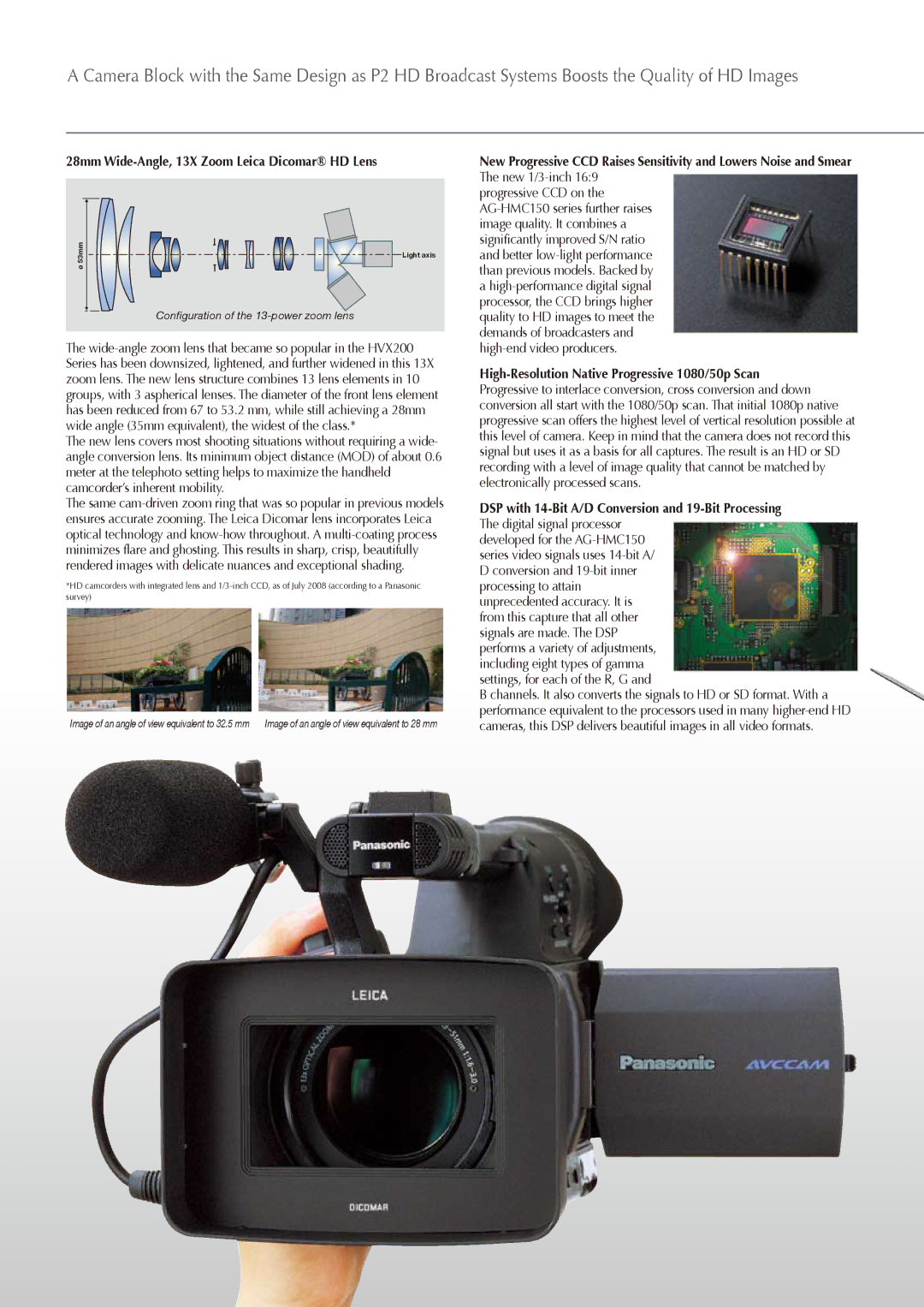
A Camera Block with the Same Design as P2 HD Broadcast Systems Boosts the Quality of HD Images
28mm Wide-Angle, 13X Zoom Leica Dicomar® HD Lens
53mmø | Light axis |
Configuration of the
The
The new lens covers most shooting situations without requiring a wide- angle conversion lens. Its minimum object distance (MOD) of about 0.6 meter at the telephoto setting helps to maximize the handheld camcorder’s inherent mobility.
The same
*HD camcorders with integrated lens and
Image of an angle of view equivalent to 32.5 mm | Image of an angle of view equivalent to 28 mm |
New Progressive CCD Raises Sensitivity and Lowers Noise and Smear
The new
High-Resolution Native Progressive 1080/50p Scan
Progressive to interlace conversion, cross conversion and down conversion all start with the 1080/50p scan. That initial 1080p native progressive scan offers the highest level of vertical resolution possible at this level of camera. Keep in mind that the camera does not record this signal but uses it as a basis for all captures. The result is an HD or SD recording with a level of image quality that cannot be matched by electronically processed scans.
DSP with 14-Bit A/D Conversion and 19-Bit Processing
The digital signal processor developed for the
B channels. It also converts the signals to HD or SD format. With a performance equivalent to the processors used in many
